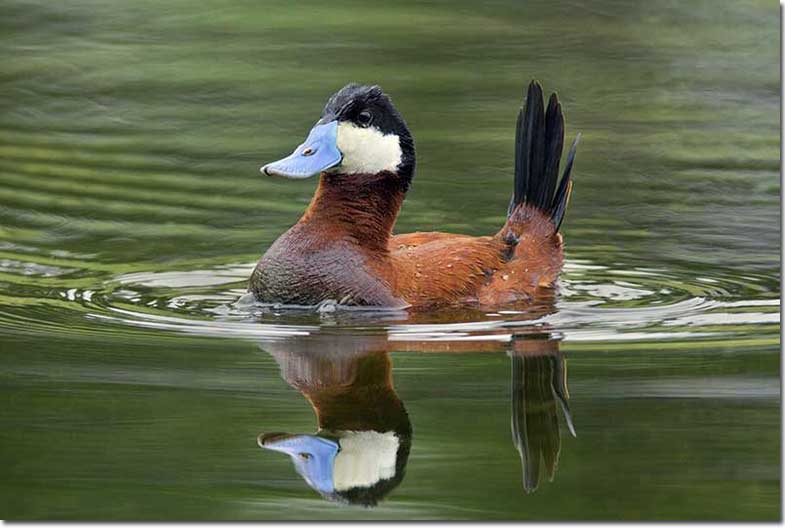
There are two so-called stiff-tailed ducks in the United States. Both species are small and easy to identify. They dive to feed or escape danger and use their tails as a rudder.
The Ruddy Duck is common and widespread. The similar Masked Duck is a tropical species very rare in the United States. Sometimes reported in the Gulf Coast states from Texas to Florida.
On this page
What you should know:
- The tail can be up or down.
- The males of both species have different breeding and non-breeding plumages.
- Male Ruddy Ducks are much less colorful in winter plumage, but maintain the white cheek.
- Females of the two species are very similar, Ruddy Ducks have a single black mark through the cheek. Masked Duck females have two horizontal streaks on the side of the head.
Rudy Duck — Length: 15 inches, Wing span: 18 inches
While most ducks pair up on the wintering grounds prior to spring, the Ruddy Duck waits until it has returned to its breeding grounds to form pairs. The Ruddy Duck is a nocturnal migrant and usually travels in small groups. Males often arrive on the breeding grounds slightly before females.
The Ruddy Duck has large feet that are set far back on its body to assist in diving. A typical foraging dive lasts about 20 seconds. Male Ruddy Ducks defend a small area around their mates, but do not defend a traditional territory.
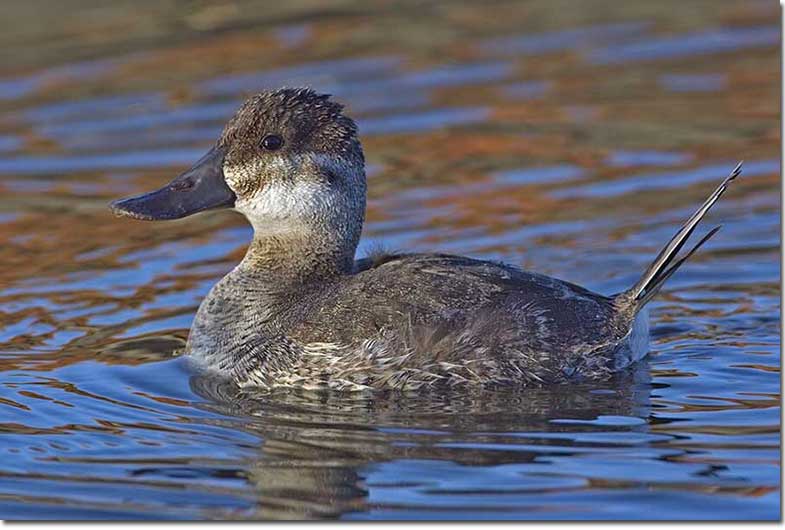
Females are a plain gray-brown with a dark line through a white cheek patch. Dark crown. Winter males are similar but lack the line through the eye. Female and winter male Masked Ducks similar but have two lines on the side of the face. Photograph © Alan Wilson.
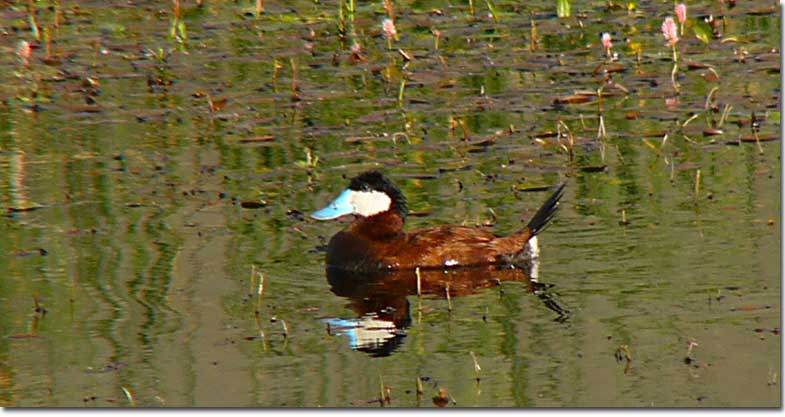
Ruddy Ducks are called “blue bills” by hunters. Photograph © Sam Crowe.
Male Ruddy Ducks in breeding plumage. Rusty back, strong white cheek, black cap, blue bill and stiff tail. Tail can be up or down.
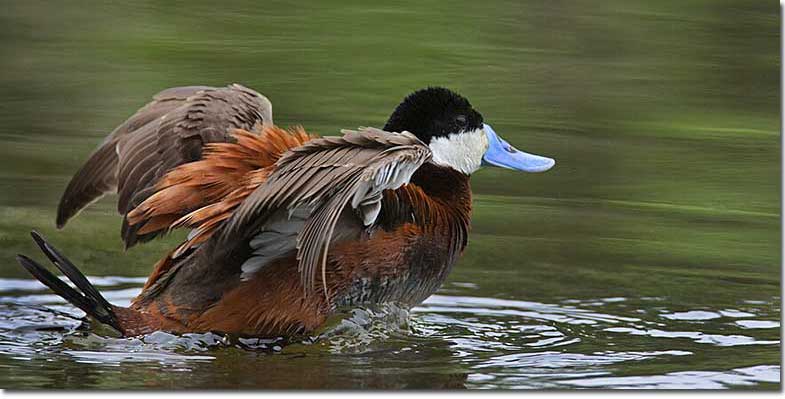
The wings of Ruddy Ducks are dark, Masked Duck has a white patch on the upper wing. Photograph © Alan Wilson.
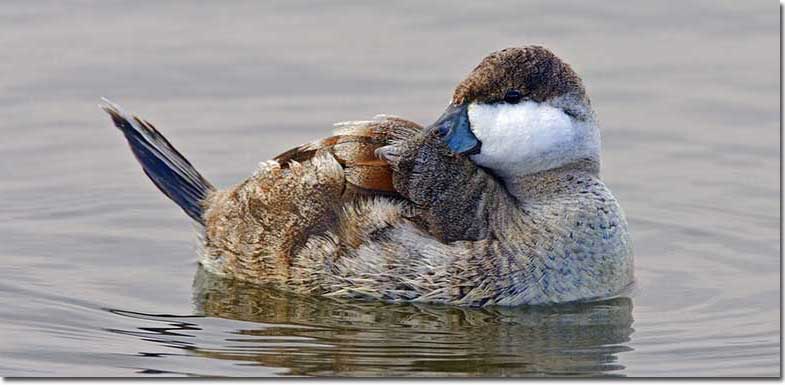
Male Ruddy Duck. The reddish feathers on the back may indicate this bird is molting either into or out of breeding plumage. Photograph © Alan Wilson.
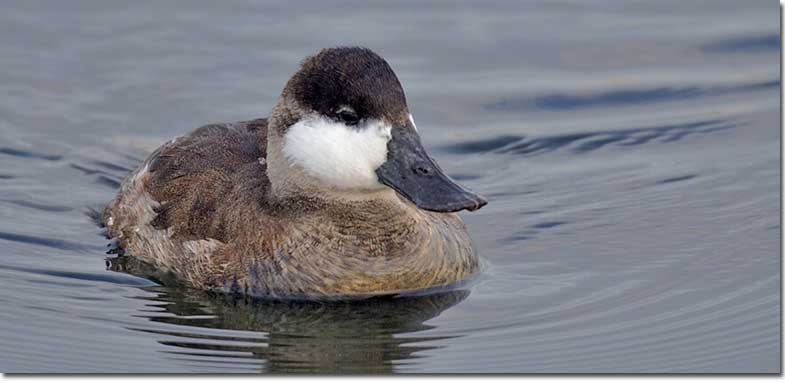
Male Ruddy Duck in winter plumage. The bill is dark instead of blue. Photograph © Alan Wilson.
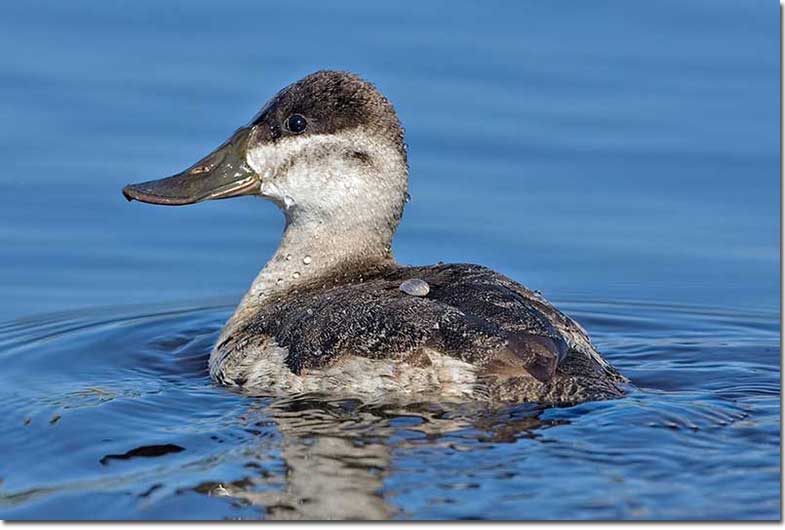
Female Ruddy Duck. The tail of both males and females can be either up or down. Photograph © Alan Wilson.
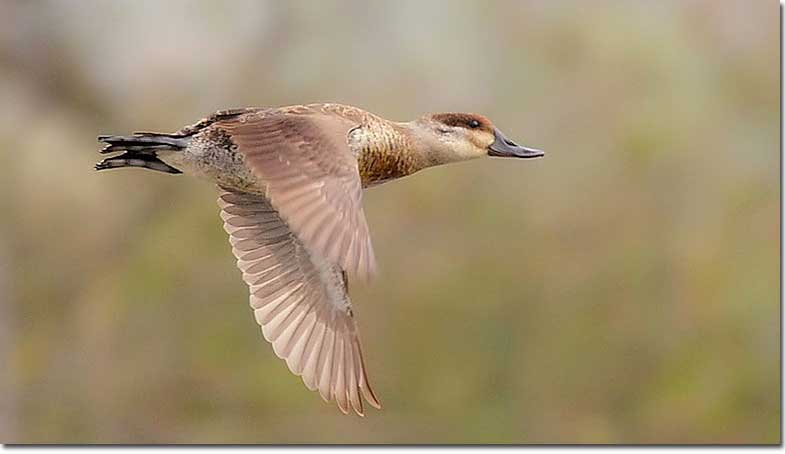
Note the plain, fairly uniform color of the wings and dark cap. Photograph © Steve Wolfe.
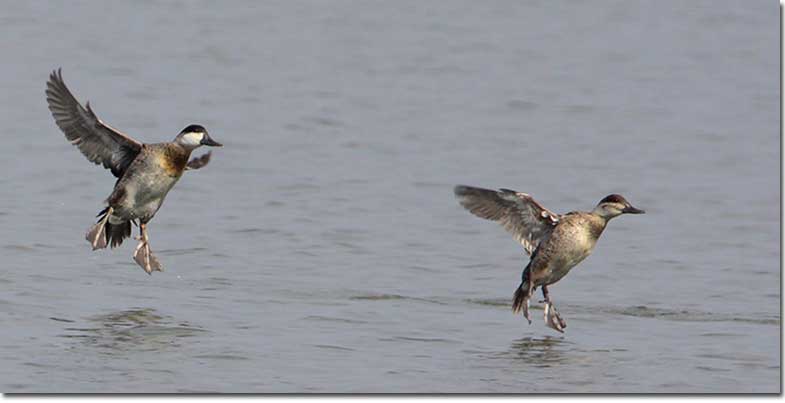
Male, left and female. Winter plumage. Photograph © Greg Lavaty.
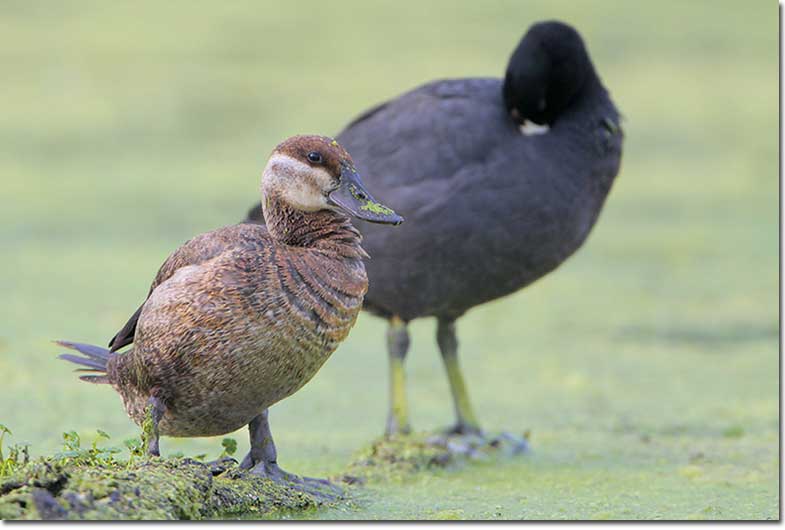
Note the short legs toward the rear of the body, great for swimming, not so good for walking. Much smaller than the American Coot in the background. Photograph © Greg Lavaty.
Masked Duck — Length: 13 inches Wing span: 17 inches
Male Masked Ducks are aggressive and can dominate larger ducks in winter feeding grounds.
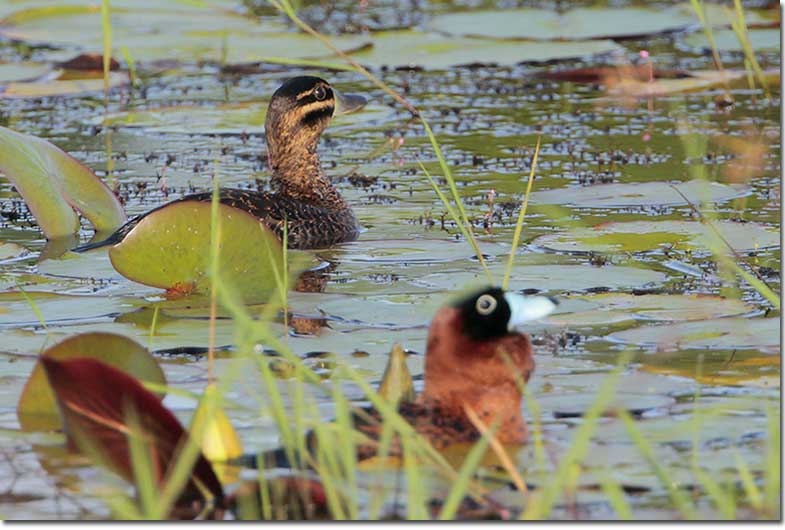
Masked Duck pair. Male in front. Photograph © Greg Lavaty.
Breeding plumaged make has blue bill, black face and reddish body. Females are a mottled brown with two black, horizontal lines across the face.
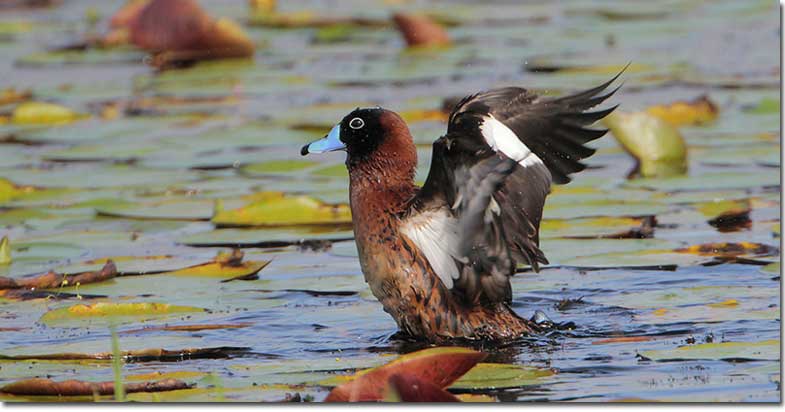
Notice the white wing patches. Photograph © Greg Lavaty.
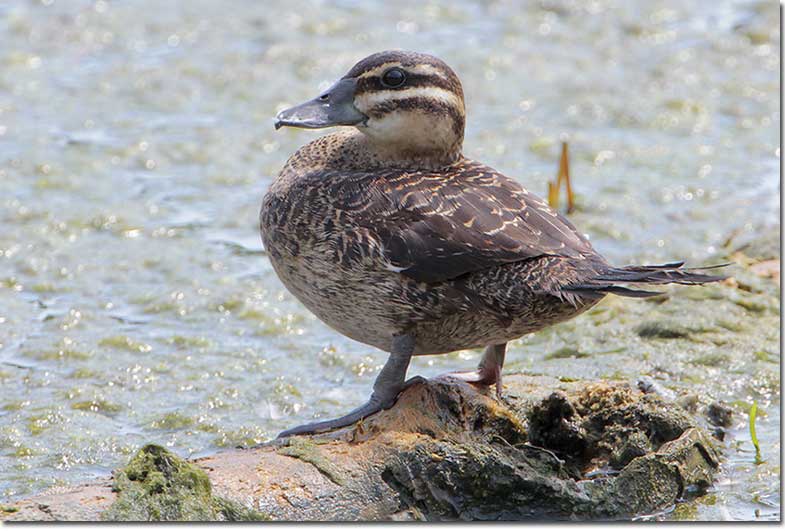
Winter males, juveniles and females very similar, with two strong strips on the side of the head. Juveniles somewhat lighter. Non-breeding males may have broader stripes on the head. Photograph © Greg Lavaty.
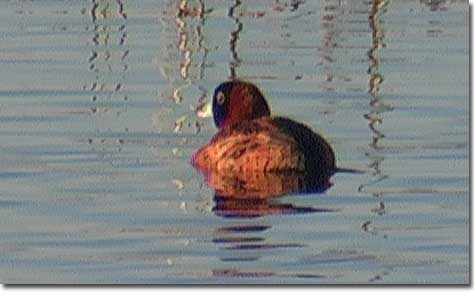
Some field guides indicate Masked Ducks will be in non-breeding plumage in January. This one failed to read the guides. He visited Flordia in January, for at least two years, in breeding plumage in January. Photograph © Sam Crowe.
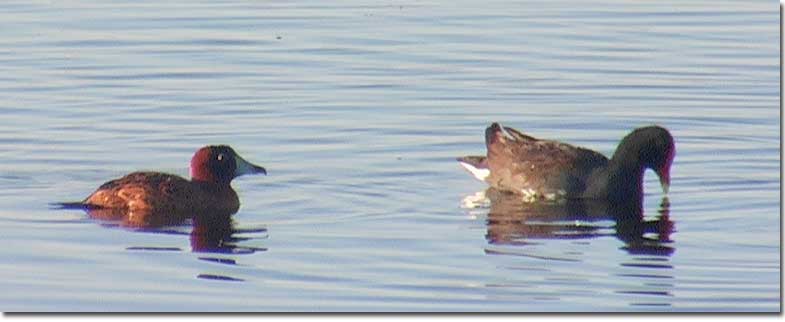
The smaller Masked Duck would chase gallinules and teal above and below the water. Photograph © Sam Crowe.
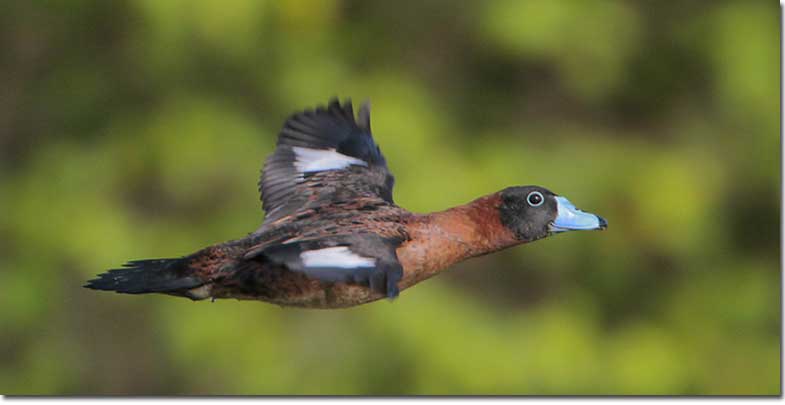
Male in flight. Note the complete eye ring and the location of the white patches on the wing, Photograph © Greg Lavaty.

